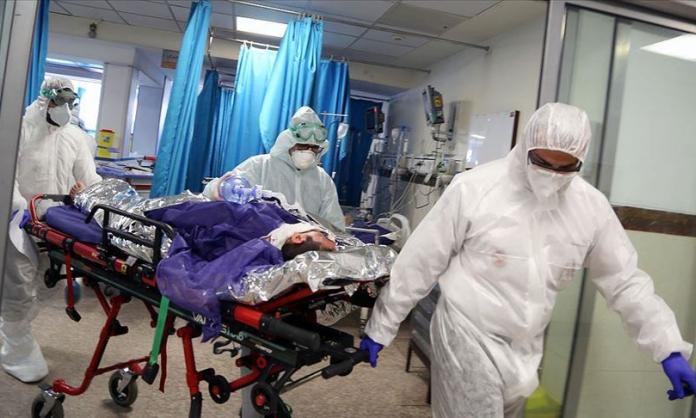Sensational images of shoppers fighting over toilet paper in supermarket aisles have at once provided fodder for the bottom feeding commercial television networks and a welcome distraction for those responsible for handling the most serious public health crisis in decades.
Politicians, social commentators and every other sanctimonious suit with a title have queued up to tut-tut, apparently oblivious to the fact that it is a deep mistrust toward them which is motivating much of the behaviour. Given the recent experience of the bushfire disaster, who can blame people for assuming the government won’t once again leave them to fend for themselves in the face of life-threatening catastrophe?
The powers that be might want to encourage us to see our much-maligned human nature as the biggest obstacle to containing the coronavirus, but it is their mismanagement and neglect of the health system that is putting people at risk and contributing to the likelihood of social chaos.
Despite the relatively recent experience of the SARS, Ebola and MERS epidemics, the health system is woefully underprepared to effectively deal with a pandemic. The cumulative neglect and defunding of the public health system under successive governments has created a situation where people suffer needlessly and die prematurely because of a lack of resources, even in the absence of a deadly pandemic. In the face of the coronavirus threat, this disgraceful situation has become positively criminal.
For decades, hospital capacity has not kept up with population growth or demand. In 1977, the number of hospital beds per 1,000 people in Australia was 8.1, according to OECD figures. In 2016, it was just 3.8. Australia’s 2018 total, 3.9 beds per 1,000 people, is considerably below the OECD average of 4.7. And when private hospital beds are taken out, the figure drops to just 2.6 beds per 1,000 people.
According to the Australian Institute of Health and Welfare, the number of hospital admissions have increased three times faster than the increase in beds since 2013. The small bed increase that has occurred has almost all been in the private sector, with no significant growth in the number of public beds for nearly a decade.
The magnitude of the problem this now presents us with is difficult to appreciate. The most significant study of coronoavirus patients so far – a study of 72,000 cases conducted by China’s Centre for Disease Control and Prevention – found that 5 percent of cases are critical (involving respiratory failure, septic shock and/or multiple organ failure) and 14 percent severe (involving breathing difficulties). This means that if 50 percent of the Australian population contracts the illness, as experts suggest is likely, as many as 2 million people are likely to require hospitalisation, and 650,000 an intensive care bed. Yet as of 2017, there were just 62,000 beds available in public hospitals and 34,300 in private hospitals. Only a small proportion of these are intensive care beds – just 2,000 according to the Australian and New Zealand Intensive Care Society Centre for Outcomes and Resources Evaluation. So, to adequately meet the coronavirus threat, we should have 350 times the current number of intensive care beds.
Similar shortages have created a living nightmare in places hard hit by the virus, like Italy. Medical staff simply have no choice but to watch people die. One emergency doctor working in northern Italy described on Twitter how: “Patients above 65… with comorbidities are not even assessed by [intensive care]. I am not saying not tubed, I’m saying not assessed and no [intensive care] staff attends when they arrest. Staff are working as much as they can but they are starting to get sick and are emotionally overwhelmed. My friends call me in tears because they see people dying in front of them and they can only offer some oxygen.” This doctor reported that his hospital was operating at twice its capacity and still is not able to keep up with the influx of cases.
The Australian government has pledged $2.4 billion to tackle the virus. But it is simply not enough. Resources should be being ploughed into equipping hospitals and establishing dedicated facilities to treat people, not just diagnose them, without delay. Privately owned pharmaceutical research and manufacturing facilities should be commandeered by government and put towards meeting the threat. The $79 billion currently being spent building a new 21-strong submarine fleet, the first of which when completed in 2035 is likely to be the submarine equivalent of a cassette tape, should be immediately redirected towards healthcare.
It’s no wonder people are panicking when the government makes it clear where they stand when profit comes into conflict with public health. Waiting to restrict travel from Italy, where the virus has been particularly virulent and deadly, until the Italian Grand Prix team has arrived in Melbourne was astoundingly transparent and an insult to all those vulnerable to the virus. Predictably, six Formula One team members have now been placed in isolation awaiting test results after developing symptoms during preparations for the race. And despite the offical health advice being to avoid crowds, the state government has refused to cancel the race. Again, the economy and profit making comes before people’s health and safety.
The virus has so far not exploded in Australia. But the time the government bought by restricting travel has been wasted.
Properly coordinated public health measures are urgently needed to minimise the impact. But if such measures jeopardise people’s livelihoods, there will be a reluctance to cooperate. Which is why workers are right to demand properly paid sick leave for as long as it is needed, for casual and permanent workers alike. The voices of businesses demanding compensation for virus-related losses are currently louder than those of workers, another reminder of the desperate need for a more combative union movement if workers are to avoid bearing the brunt of crises like these.
Where isolation is required, the government should provide for people’s needs and coordinate the distribution of basic necessities in a way that is fair and safe. The problem is bitter experience has shown people that this is not how capitalism works. This is the real scandal, not people buying more than their share of toilet paper.









